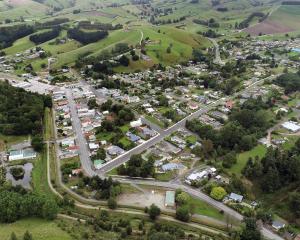Otago desperately needs marine reserves for research, writes underwater documentary maker Andrew Penniket, of Wanaka.
Otago is in desperate need of marine reserves for research. If we are to look after our seas well, we need to know as much as possible about not just individual species but also how they interact with other species - in other words, their whole ecosystem.
Marine reserves allow us to do this research unhindered and without the confusion of fishing impacts.
It is now 40 years since New Zealand's first marine reserve was created at Goat Island, north of Auckland, but still there is none in Otago.
Fortunately, we are entering a historic phase in how we look after Otago's coastline and seas. The South East Marine Protection Forum has been consulting and working through the process of recommending areas for protection as marine reserves (no fishing take at all) in Otago.
The benefits of marine reserves have been well established - education, public enjoyment, tourism and their important role in conservation (by protecting large breeding individuals that are vital to the health of populations).
But perhaps the greatest benefit is for scientific research. We urgently need to know more about the sea and the many challenges facing it - climate change, overfishing, pollution, siltation and nutrient run-off - just to start.
But it is impossible to research a species such as paua when your study animals are caught once they reach legal size. Marine reserves offer the opportunity to learn about animals and how they live without human interference.
There is no doubt the University of Otago has been handicapped by the lack of local marine reserves in which to conduct studies. The nearest reserves to Dunedin are in Fiordland, where Otago researchers have investigated many topics ranging from chemistry of the fiords to dolphin ecology - but that's not Otago!
Since its creation 40 years ago, the Goat Island marine reserve, where the University of Auckland's marine laboratory is stationed, has generated more than 170 scientific papers on marine ecology, focusing on dozens of species.
During 1986-87, I was fortunate to observe and film Alistair MacDiarmid's PhD study on the ecology of crayfish. After 10 years' protection at Goat Island, crayfish (rock lobster) numbers were high enough for Dr MacDiarmid to tag hundreds of individuals and follow them around day and night, using a map of their reef to mark lairs and feeding locations.
For the first time, it was possible to actually get a handle on growth rates, age structure, longevity and natural mortality of crayfish. Dr MacDiamid also found out about seasonal patterns of movement and detailed information on courtship and breeding.
He found that crayfish travel out to the edge of the reef where at about 5.15am in the second half of September the female crays stand on their heads and wave their tails in the current, releasing hundreds of thousands of larvae to the sea.
None of this research would have been possible without a marine reserve.
Just as important are ecosystem studies. As crayfish numbers built up at Goat Island, it was discovered they were eating down the massive herds of kina, which, in the absence of predators, had eaten and destroyed the kelp forests.
Gradually the kina decreased and the kelp came back, along with all the other species that benefit from kelp beds - moki, greenbone and paua.
There is nowhere in Otago where this type of research can be carried out. There is nowhere that paua can be tagged and followed into old age or where the behaviour and ecology of blue cod can be studied.
We can't answer basic questions such as how long do these animals live down here? And what indirect impact is fishing having on kelp forests?
Marine reserves are also crucial for monitoring - so that changes happening in the sea can be studied without the confounding factor of fishing. For example, what is the impact of sediment and land run-off on the numbers of paua and blue cod on our coast?
Monitoring of marine reserves is a very powerful tool for finding out what is happening in the seas.
So where are the best places for marine reserves? To be of any use, they need to be large, at least 5km long and well out to sea. Any smaller and they can't support viable populations.
The reserves need to be visible to the public, where visitors and locals can keep an eye out and help enforce them. And we need to protect representative examples of all the habitats in Otago, from sea grass beds to giant kelp forest and open-coast paua territory.
Most importantly, marine reserves need to be accessible for research, public enjoyment and education. A remote reserve that no-one can get to is not much use to anyone, not even paua as they would be poached out of sight.
Shag Point Beach is an obvious contender. It's right beside Highway 1, has a range of habitats and lots of locals to keep an eye out. The Nuggets would be good too. A big reserve there would protect a sample of all the major habitats in coastal Otago.
The south coast of Otago Peninsula? What do you think? Now is the time to get involved and say where you want marine reserves and other forms of protection.










